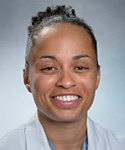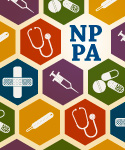June 8th, 2016
The Fringe: Part 3 – Deciphering Your Benefits Package
Bianca Belcher, MPH, PA-C
It is important to review more than just your salary when considering whether or not to accept a job. The rest of your benefits package could contribute significantly (or negatively impact) your long term financial health. Much of this is overlooked by new graduates and providers that claim that finance/money isn’t their thing. In a small, unofficial poll I asked some of my co-workers, recent graduates, and fellows the following questions:
- Does your employer offer life insurance and if so, how much is the policy worth and how much do you pay for it?
- Does your employer offer short term disability and if so, what percentage of your salary does it cover? Is it a pre- or post-tax payout?
Out of 15 people, only 2 were able to answer yes/no with confidence. Most “thought” they had checked off a box at some point for life insurance and disability, but were unable to discuss the details of either. A little knowledge and forethought with these topics can go a long way if something bad were to ever happen.
Short-term disability
Short-term disability (STD) is insurance that pays you a percentage of your salary if you were to become temporarily disabled for a short period of time. If you are talking about a long period of time (usually > 3 months), you’ll need long-term disability. A few of the most common claims for STD are pregnancy, back pain, and digestive disorders, but as you can imagine – the possibilities are endless. If you think about it, you and your ability to earn income are your biggest asset.
 If you are disabled and use your STD, your employer will pay you a percentage of your salary (usually 50-60%) after a waiting period of 90-180 days. Things for you to consider:
If you are disabled and use your STD, your employer will pay you a percentage of your salary (usually 50-60%) after a waiting period of 90-180 days. Things for you to consider:
- Get a running total of your monthly expenses. You should split them into two categories (Essential and Non-Essential). The Essential column should contain all expenses that you absolutely need to pay – rent, monthly medications, heat, water, car, etc. The Non-Essential list should include everything else that you spend money on that makes you happy, but you could probably live without – cell phone, expensive gym or country club membership, annual vacation to the Caribbean, Starbuck every morning, etc. Be diligent and try to include everything. The point is to give you an idea if a regular STD plan would cover you and what you’d have to sacrifice during that time.
- Ask your employer if your STD is paid out PRE or POST tax. If your employer pays you 60% of your salary and then you have to pay income taxes on that, your take home will be much less than if you receive 60% after the taxes have been taken out.
- Are you covered for YOUR profession? Many of the less expensive policies cover you for ANY profession. This means that if you are a surgical PA and lose two fingers you probably wouldn’t be able to work as a surgical PA anymore, but you could flip burgers at the local diner (meaning you can still work doing something). Because you can still work, they could deny/cut off your disability payments. This is problematic since the income potential for a surgical PA versus a diner line cook is substantially different. Conversely, if you are covered under YOUR profession (a surgical PA), if you can no longer work as a surgical PA anymore, then you can get disability based on your earnings as a surgical PA. Specialized disability insurance is a little more expensive, but depending on your salary – it might just be worth it.
- What if your employer coverage isn’t adequate? See a professional group specializing in this about a “bolt-on” or “stand-alone” policy to augment or replace your benefit from your job. Typically a bolt-on policy can get close to 85% of your base salary. These policies can grow with your career, so getting them early can be a smart, flexible decision.
Life Insurance
Life insurance is tricky and can depend significantly on your personal circumstances. Here are the basics:
- Know what your employer provides. A standard employment package likely includes 1X or 2X your salary for free with an option to purchase additional coverage at a very low rate.
- Think about why you may (or may not) need additional life insurance. Do you have children, spouse, or other dependents? Do you have debt (mortgage, student loans with co-signers, or a business)? Do you want to provide for your family in the event of your death? If you answered “yes” to any of the above, you may consider an additional policy. For a young, healthy individual, life insurance can be very affordable.
Company Match
 Take a look at the retirement section of your benefits. Many companies offer a match. This means that if you put a certain percentage of your salary into retirement at work, the company will “match” that money up to a certain percent or dollar amount. To be clear, the company is giving you money to participate in the retirement plan. The folks at Highland Financial recommend contributing (at a minimum) the match-maximum to take full advantage of the greatest amount of money that the company will give you for participating.
Take a look at the retirement section of your benefits. Many companies offer a match. This means that if you put a certain percentage of your salary into retirement at work, the company will “match” that money up to a certain percent or dollar amount. To be clear, the company is giving you money to participate in the retirement plan. The folks at Highland Financial recommend contributing (at a minimum) the match-maximum to take full advantage of the greatest amount of money that the company will give you for participating.
For example, if your company will match your contributions up to 3%, make sure that you are at least putting 3% of your salary into the retirement fund. It will be as though you are putting 6% in there each year. This is a great perk and can sometimes be the differentiator between two similar job offers. In the rare case you spend your career with a single employer, those choices can make a tremendous difference.
Reimbursement
Reimbursement categories can add up to a significant amount of money. Be sure to take advantage of every opportunity possible.
- Relocation – If you are moving across the country, it can be very expensive ($2,000-$10,000).
- Professional Licensure/Certification/State Controlled Substance/DEA- The first time around, these costs are about $1,500 for PAs (this varies for MDs and NPs); after that the fees tend to spread out – some are annual, while others are every 3 years.
- CME events/conferences – You need continuing medical education in order to maintain your license. If you are at a large academic institution, you probably can’t walk down the hall without tripping over a free CME opportunity, but if you are at a private practice or smaller hospital, this reimbursement will be crucial. To put things into perspective, $1,500-2,000 usually covers 1 conference after adding up conference fees, flight, hotel, and food.
Hope this was helpful. The Fringe: Part 4, the last installment, will address retirement — a subject that becomes more interesting the older we get, but should be considered important by providers early in their career as well.



Excellent! Would also like to throw in medical and dental. Co-pays and deductibles (i.e. burdens on the employee) are creeping up, even in organizations and health systems that have traditionally offered cushy plans. These benefits may seem easy to take for granted in the medical profession; however, if you or a dependent family member gets sick, needs high levels of specialty care, has an expensive chronic illness, or is seriously injured, these costs can hit hard if an employer-offered plan places a lot of cost back on the employee.
Thank you for your important additions! You are absolutely right. Medical and dental will play a bigger and bigger part as insurance rates rise.
Best,
Bianca